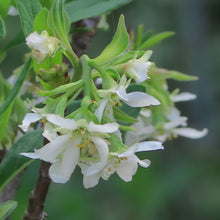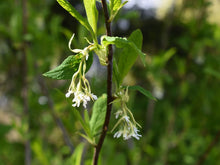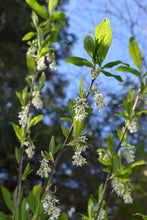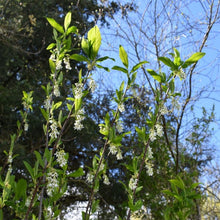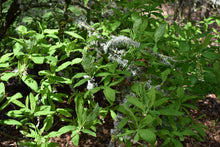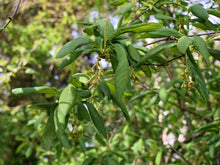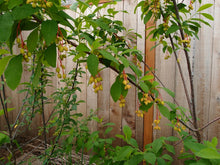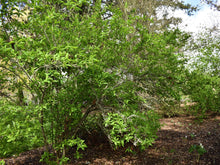
Oemleria cerasiformis
Osoberry (previously known as Indian Plum) is a fast-growing, multi-stemmed shrub that will steal your heart when it starts leafing-out in February. Just when you thought winter may never end, Osoberry leads the charge with its one-of-a-kind lime-green foliage. Soon after, prolific chains of greenish-white flowers dangle from the branches, which are dioecious (either male or female) and provide an early nectar source for hummingbirds and native bees. The small oval fruits of female plants start out yellow-gold in late summer and become bluish-black bird-favorites in the fall.
- Plant type/canopy layer: deciduous, perennial, large shrub or small tree
- Size at maturity: 3 - 20' tall, 5 - 14' wide
- Light requirements: part sun to full shade
- Moisture requirements: dry to moist soil
- Bloom time: Feb - July (Feb - March in the Portland Metro area)
- Growth rate/ease: fast growth rate, moderately easy to grow
- Wildlife support: flowers attract and provide nectar for hummingbirds, adult butterflies, bees and other insect pollinators; fruits adored by birds; overall plant is caterpillar host and larval food source for native butterflies and moths
- Native habitat/range: common in dry to moist open woods and streambanks from British Columbia south throughout western Washington, Oregon, and into northwestern California. Portland Plant List - yes.
- Special features & uses: early bloomer; wildlife favorite; excellent for erosion control; landscape uses include hedgerows, windbreak, woodland and pollinator gardens
Gardening with Osoberry: Osoberry grows like a large shrub or small tree with a wide variety of forms; dense and full in sunnier areas, thinner and more delicate in the shade. It is happiest in the dappled light of forest giants. It tolerates a range of soil types and can even grow well in clay, making it an excellent choice as a backdrop in any woodland garden, where its plentiful early blooms herald the arrival of spring. Be sure to place this beauty in protected, moist areas since it’s delicate foliage makes it more intolerant of both herbicides and high heat.
Photo Credit 1: "File:J20160225-0061—Oemleria cerasiformis—RPBG (25332995696).jpg" by John Rusk from Berkeley, CA, United States of America is licensed under CC BY 2.0
Photo Credits 2 - 8: Nikkie West, Sparrowhawk Native Plants








